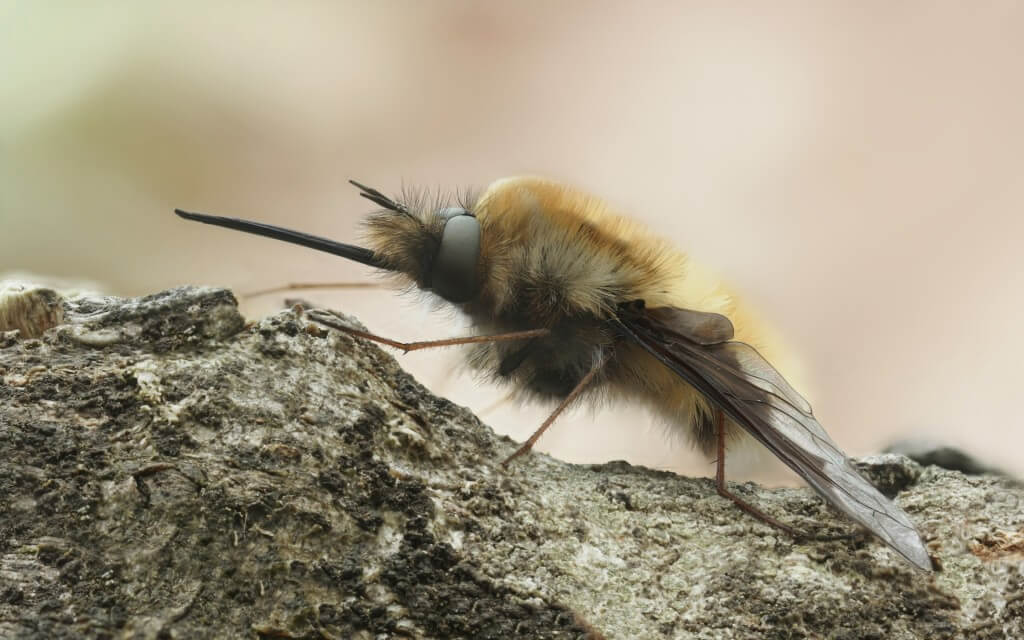
I am a birder, but I have got used to looking for signs of spring other than the arrival of warblers and hirundines, Wheatears and Garganey, Sandwich Terns and Ring Ousels. On Sunday morning, Willow Warblers and Blackcaps were adding their songs to those of many Chiffchaffs at my local patch of Stanwick Lakes. I can just about recognise a few butterflies and even some of the commoner spring plants. But I have become quite adept at spotting another sign of spring – flying noses.
I first noticed flying noses several years ago and now I set aside some time to look of them in my garden on sunny days in early April. I saw several on Sunday morning. I bet you might see some too if you keep your eyes open.
Flying noses are my name for the large bee fly, Bombylius major. They look like smallish bumblebees at first glance because they are brown and hairy, but they also look like hoverflies, because they can hold themselves still in the air. But they are neither – they are bee flies.
These bee mimics use their long proboscises to feed on the nectar of primroses (I can identify them too!) and other early spring plants. Their larvae feed on the grubs of solitary bees and wasps.
Since they are widespread in Europe, North America and parts of Asia in spring, including early spring, have a look out for them and I bet you’ll see them soon. Let me know if you do.
[registration_form]
I was watching 2 of them yesterday on patch.
There were at least 3 of them hovering over various bits of my garden on Sunday. Thanks for identifying them I was wondering what they are. The primroses were looking glorious in the sunshine, I guess the bee flies were enjoying them too
Hmm, there are a pair of willows outside my windows covered in catkin blossom and bit bees harvesting pollen from them, I must try and see if any of those bees are flying noses now.
Thank you for this post.
The Soldierflies and allies, of which the bee-flies (Bombyliidae) is one of the ‘allies’ has a recording scheme (yes, there is one) and they would no doubt love the records. And Mark, my hunch is that Northamptonshire is possibly one of the lesser recorded counties for flies – so your burgeoning interest in the Diptera may be of greater significance – after all, there is your ivy – https://markavery.info/2014/10/01/question-ivy/ in your jitty – https://markavery.info/2015/09/29/jitty/ – to look out for at the end of the year. Goodness me, you might get labelled an entomologist at this rate!
The Soldierflies and allies (which include the flying-noses) website is http://www.brc.ac.uk/soldierflies-and-allies/home and if you really keep your eyes out, you might notice the other members of the genus too – see http://www.brc.ac.uk/soldierflies-and-allies/sites/www.brc.ac.uk.soldierflies-and-allies/files/Identification_bee_flies_Bombylius_v2_0.pdf for a useful identification guide.
Richard
And they have a whole webpage devoted to these creatures! http://www.brc.ac.uk/soldierflies-and-allies/bee-flies
R.
Thank you – we shall add our records – 2 in the garden last weekend feeding on aubretia.
Always see them in the first week of April in London – I find them completely reliable, unlike Swallows, Wheatears, Brimstones etc etc